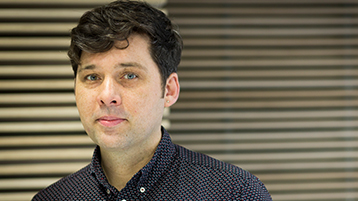How has the use of childcare changed in recent years?
Across Germany, almost every child between the ages of three and six is in public childcare. For ten years now, the attendance rate has been well over 90 percent, in the new federal states around 95 percent. If we look back historically, that means a significant increase in public care for the old Federal Republic. In the new federal states, in turn, this is actually a return to the childcare quota that was common in the GDR at the time. There is a big gap in the area of under three-year-olds – the inquiries are significantly higher than the compliance rate from the municipalities, which is currently 35 percent nationwide. However, here too the rate is significantly higher in the new federal states.
Who works in day care centers?
Public childcare is characterized by the fact that, in the course of the quantitative expansion in the last 20 years, not only educators, but also curative and social pedagogues, social workers, childhood pedagogues and therapists have been working in this professional field. These specialists qualify through technical colleges, technical colleges and universities. The rate of academics in childcare is, however, relatively low – especially when compared to other European countries – around five percent.
What are the consequences of the increasing use of public childcare?
In some cases, we have a considerable shortage of professionally suitable personnel, and the qualification of appropriate people cannot fill these gaps at the moment. The care times have to be reduced in some cases, which we have now observed in the pandemic situation. This is of course a dynamic that has consequences for the entire professional field. In addition, day-care centers for children work under the triad of upbringing, care and education, which makes the field of work very demanding, especially under the political expectation that connections to school education should be created in the day-care center.
What is the position of skilled workers in our society?
The care sector is still a classic women’s domain. It began as early as the 19th century, among other things with the idea of spiritual motherliness and the professionalization of female characteristics. It cannot be denied that so-called women’s professions are paid less in a patriarchal society. There is not a single job that is predominantly carried out by women that is well paid in an overall comparison. The position of childcare professionals within our society is shaped by this. Because payment also means recognition and shows who is at the center of our society and who – also through payment – is more on the margins.
What is behind the lack of appreciation for this work?
I think there is still the idea that it is a job that basically anyone could do, for example supervising, washing and feeding other people, and women in particular must be innate to feel good to take care of other people. This devaluation of care work leads to the assumption that vocational training is also not of high quality and therefore does not have to be particularly well paid financially. As long as this is the socially recognized consensus towards the entire professional field of social services, there will be no broad social appreciation.
Which problems in childcare were highlighted by Corona?
It has been shown what a central everyday function child day-care centers and day-care centers have for the children, but also for their families. This relates to the provision of food, social contacts among the children and advice to parents on questions of upbringing. We have seen that childcare is not just a place of care, but a place for early childhood education and enables peer-to-peer contact. I hope that actually reverberates on a political level.
–

:quality(80)/cdn-kiosk-api.telegraaf.nl/cbd26ecc-b15a-11eb-b563-02c309bc01c1.jpg)